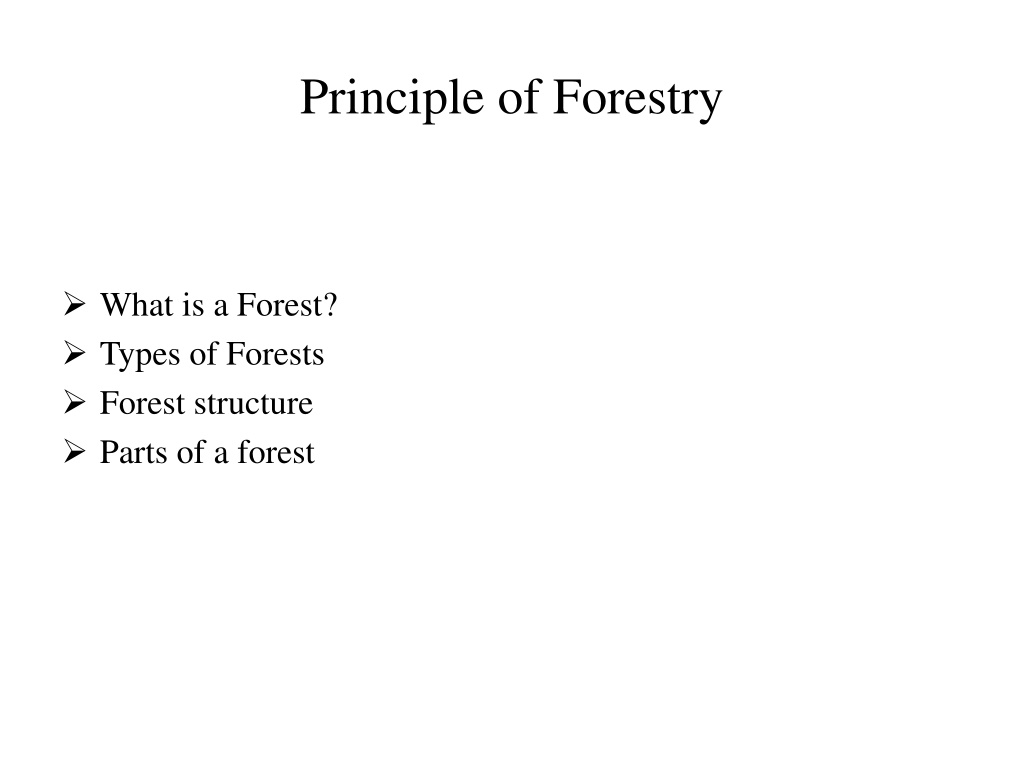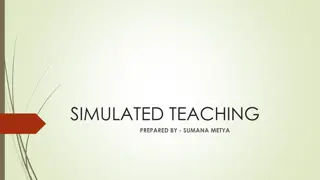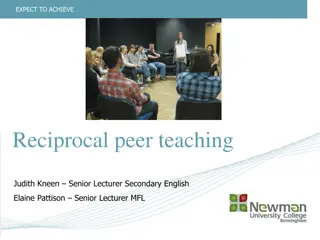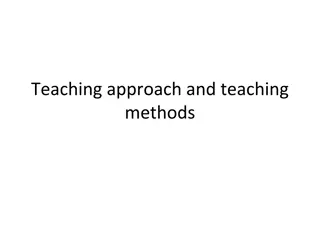
Understanding Forest Ecosystems: Types, Structure & Importance
Learn about the principles of forestry, the definition of a forest, types of forests, forest structure, and the crucial interconnectedness of forest components. Explore the different layers of a forest and the significance of diverse tree species in supporting wildlife biodiversity.
Download Presentation

Please find below an Image/Link to download the presentation.
The content on the website is provided AS IS for your information and personal use only. It may not be sold, licensed, or shared on other websites without obtaining consent from the author. Download presentation by click this link. If you encounter any issues during the download, it is possible that the publisher has removed the file from their server.
E N D
Presentation Transcript
Principle of Forestry What is a Forest? Types of Forests Forest structure Parts of a forest
What is a Forest? A Forest is a community of trees, shrubs, herbs, and associated plants and organisms that cover a considerable area that use oxygen, water and soil nutrients as the community attains maturity and reproduces itself. A Forest is a community of living and non-living things where the main species is trees. Everything in a forest is connected. Everything affects everything else. 1/27/2025 Forest 2
What is a Forest? As a result, the forest is made up of small and large areas of different aged trees, often with a mixture of different species. A forest with many trees of different ages and types supports a variety of wildlife. Without a variety of trees in the forest the variety of animal life would be greatly decreased. 1/27/2025 Forest 3
Types of Forests Forests come in all Shapes and Sizes. The many different types of forest are generally classified according to Location and Climate. 1. Pure forest 2. Mixed forest 1/27/2025 Forest 7
1- Pure forest A forest in which one species makes up 80% or more of the total number of trees. 1/27/2025 Forest 8
2- Mixed forest A forest consists of two or more types of trees, with no more than 80% of the most common tree. 1/27/2025 Forest 9
Forest structure A forest has a distinct vertical structure. Within a healthy forest, there are recognizable layers of plants, from the soil to the treetops. Each of these layers is composed of one or more dominant types of plants. Five layers that appear in most forests: 1. The canopy 2. Shrub 3. Herbaceous 4. Litter 5. Soil layers 1/27/2025 Forest 10
Forest canopy: Formed by the branches and leaves from the tallest trees Understory: The middle layer where shorter trees and shrubs grow. Forest floor: Is the third layer where trees begin as seedlings. Tree roots also make up this layer that hold onto to soil and organic matter so that grasses, fungi, microorganisms and animals may flourish. 1/27/2025 Forest 11
Parts of a forest The living parts of a forest include trees, shrubs, grasses and other herbaceous (non-woody) plants, algae, fungi, insects, mammals, birds, and microorganisms living on the plants and animals and in the soil. These interact with one another and with the non-living part of the environment - including the soil, water, and minerals, to make up what we know as a forest. 1/27/2025 Forest 13
Levels of the Forest Level: Upper Canopy top level of the forest formed by leaves & branches of tallest trees. Plant: Different birds and insects Animal: Level: Middle Level or Understory Plant: Smaller trees & shrubs Insects, woodpeckers and many other birds Animal: Level: Herb, Underbrush or Shrubbery Layer Ferns, wildflowers and other soft stem plants, tree seedlings. Plant: Animal: Level: Forest Floor Ground cover and soil, leaf litter, mushroom, flowers. Plant: Animal: bacteria, soil insects, spiders






















